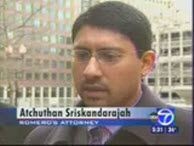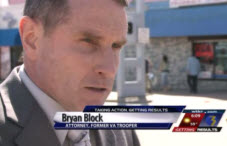
Virginia Burn Injury Attorney: Fighting for Fair Scarring Compensation in VA
As of December 2025, the following information applies. In Virginia, burn injury claims involve seeking compensation for physical, emotional, and financial damages, including significant scarring. A burn injury attorney in VA works to protect your rights and recover maximum compensation from responsible parties. The Law Offices Of SRIS, P.C. provides dedicated legal defense for these matters.
Confirmed by Law Offices Of SRIS, P.C.
What is a Burn Injury in Virginia?
A burn injury in Virginia isn’t just about the immediate pain; it’s a profound trauma that can impact your life for years, sometimes forever. These injuries range from first-degree (like a bad sunburn) to fourth-degree (damaging muscle and bone), often leading to severe scarring, disfigurement, and long-term medical needs. In Virginia, if someone else’s carelessness caused your burn, you have legal rights to seek compensation for your suffering, medical bills, lost wages, and the lasting physical and emotional scars.
Takeaway Summary: A burn injury in Virginia is a serious physical trauma caused by another’s negligence, entitling victims to legal compensation for extensive damages, including permanent scarring. (Confirmed by Law Offices Of SRIS, P.C.)
How to Pursue a Burn Injury Claim in Virginia?
Dealing with a burn injury is horrific enough without the added stress of a legal fight. But if someone else’s actions or inactions led to your devastating burn, pursuing a claim is often the only way to cover your extensive losses and get the justice you deserve. It’s not just about medical bills; it’s about lost income, future care, and the deep emotional toll. Here’s a basic roadmap of what a burn injury claim in Virginia typically looks like:
- Get Immediate Medical Attention: This is non-negotiable, for your health and your claim. Document everything. Every visit, every treatment, every prescription. Your medical records are the bedrock of your case, showing the extent and severity of your burn injury. Don’t delay this step; it’s critical.
- Preserve Evidence: The accident scene might hold vital clues. Take photos and videos of where the injury occurred, what caused it, and your injuries themselves. Get contact information from witnesses. If a product was involved, keep it, don’t try to fix it. This evidence will be vital for your burn injury lawyer VA.
- Understand Virginia’s Laws: Virginia operates under a strict contributory negligence rule. This means if you are found even 1% at fault for your own burn injury, you could lose your right to compensation. This makes having an experienced burn injury attorney VA even more essential. They can help counter such claims.
- File Your Claim Timely: Virginia has a statute of limitations for personal injury claims, usually two years from the date of the injury. Miss this deadline, and you generally lose your right to sue. There are exceptions, but don’t count on them. Act quickly.
- Negotiate with Insurance Companies: Insurers are not on your side. Their goal is to pay as little as possible. Your burn injury attorney will gather all documentation, calculate your full damages (including future medical costs, lost earning capacity, and pain and suffering), and negotiate fiercely on your behalf.
- Consider Litigation: If a fair settlement can’t be reached, your case might go to court. This involves filing a lawsuit, discovery (exchanging information with the other side), and potentially a trial. Having a seasoned scarring compensation attorney VA representing you is critical at this stage.
- Seek Scarring Compensation: Burn injuries often result in permanent scarring and disfigurement. This isn’t just cosmetic; it’s physically painful and emotionally debilitating. Compensation for scarring, disfigurement, and related emotional distress is a significant part of many burn injury claims.
The path to justice after a burn injury can be long and challenging. That’s why having a knowledgeable legal advocate by your side is not just helpful, it’s often the deciding factor in achieving a favorable outcome. We’ve seen firsthand how a serious burn can turn a person’s world upside down, and our approach is always rooted in direct, empathetic support.
Can I Recover Compensation for Emotional Trauma and Scarring from a Burn Injury in Virginia?
Absolutely, you can. Burn injuries aren’t just about the physical pain; they leave deep emotional and psychological scars too. Many burn injury victims experience severe anxiety, depression, PTSD, and a diminished quality of life due to their injuries and visible scarring. These are very real, very tangible losses, and Virginia law recognizes your right to seek compensation for them.
When we talk about “scarring compensation attorney VA,” we’re talking about seeking damages for much more than just the visible marks. We’re considering:
- Pain and Suffering: This covers the physical discomfort and the mental anguish caused by the burn injury and its aftermath.
- Emotional Distress: This includes the psychological impact, such as depression, anxiety, fear, and embarrassment associated with disfigurement.
- Loss of Enjoyment of Life: If your burn injuries prevent you from participating in activities you once loved, you can seek compensation for this profound loss.
- Disfigurement: The physical alteration to your appearance, especially from severe burns, is a significant component of damages. This isn’t just cosmetic; it impacts self-esteem, social interactions, and even career opportunities.
- Future Medical and Therapeutic Needs: Scarring often requires ongoing treatments like reconstructive surgery, skin grafts, physical therapy, and psychological counseling. These future costs must be factored into your claim.
It’s important to remember that placing a monetary value on something as personal as emotional trauma and scarring is incredibly challenging. It requires a deep understanding of the law, a compassionate approach to your story, and the ability to effectively present your case. This is where an experienced burn injury lawyer VA truly shines. They work to ensure that the full scope of your suffering, both seen and unseen, is acknowledged and compensated.
Blunt Truth: Some injuries heal, but burns can leave permanent marks, inside and out. Don’t let anyone minimize the emotional and psychological toll. Your claim should reflect the entirety of your struggle and future challenges.
Why Hire Law Offices Of SRIS, P.C. for Your Virginia Burn Injury Claim?
When you’re facing the aftermath of a burn injury, you need more than just a lawyer; you need a staunch advocate who understands what you’re going through. At Law Offices Of SRIS, P.C., we’re committed to providing that level of representation. Our approach is direct, our methods are seasoned, and our focus is always on securing the best possible outcome for you.
Mr. Sris, our founder and principal attorney, brings a wealth of experience and a personal commitment to every case. He understands the intricate details of Virginia law and the profound impact a serious injury can have. As Mr. Sris puts it:
“My focus since founding the firm in 1997 has always been directed towards personally handling the most challenging criminal and family law matters our clients face. I find my background in accounting and information management provides a unique advantage when handling the intricate financial and technological aspects inherent in many modern legal cases. As someone deeply involved in the community, I believe it’s important to not only practice law but also to actively participate in shaping it, which is why I dedicated effort towards amending Virginia Code § 20-107.3 and achieving state recognition for cultural milestones.”
That insight extends directly to personal injury cases, where diligent investigation, meticulous documentation, and a deep understanding of how to value both visible and invisible damages are paramount. Our firm doesn’t just process cases; we engage with them, bringing a knowledgeable perspective that leverages years of experience in the Virginia legal system.
Our Commitment to You:
- Personalized Attention: Your burn injury isn’t just another case file to us. We listen to your story, understand your unique challenges, and tailor our strategy to meet your specific needs. We know the details of your life before the injury, and we strive to help you regain as much of it as possible.
- Thorough Investigation: We dig deep. We gather evidence, interview witnesses, consult with medical experts, and reconstruct the events that led to your injury. Our goal is to build an unshakeable case that clearly demonstrates fault and the full extent of your damages.
- Aggressive Advocacy: Whether it’s at the negotiation table with insurance companies or in the courtroom, we are fierce advocates for our clients. We won’t back down from a fight when your future is on the line. Our experience has taught us how to anticipate and counter the tactics used by opposing counsel.
- Maximizing Compensation: We don’t just aim for a quick settlement. We meticulously calculate all your damages—past, present, and future—including medical expenses, lost wages, pain and suffering, emotional distress, and compensation for scarring and disfigurement. We fight for every dollar you deserve.
- Clear Communication: The legal process can be confusing. We make sure you’re always informed, understand your options, and are empowered to make the best decisions for yourself and your family. We speak in plain English, not legal jargon.
Choosing the right burn injury lawyer in VA can make all the difference in the outcome of your claim. We know the stakes are incredibly high when you’re facing a lifetime of recovery, and we’re here to provide the direct, reassuring support you need. Let us take on the legal burdens so you can focus on healing.
Law Offices Of SRIS, P.C. is ready to discuss your situation. Our Fairfax, Virginia location is here to serve you:
Law Offices Of SRIS, P.C.
4008 Williamsburg Court
Fairfax, VA, 22032, US
Phone: +1-703-636-5417
Call now for a confidential case review and let us begin protecting your rights and future.
Frequently Asked Questions About Virginia Burn Injury Claims
Q1: What types of damages can I recover in a burn injury claim?
You can recover damages for medical expenses, lost wages, future earning capacity, pain and suffering, emotional distress, disfigurement, and scarring. The goal is to compensate you for all losses, both economic and non-economic, resulting from the burn injury in Virginia.
Q2: How long do I have to file a burn injury lawsuit in Virginia?
In Virginia, the general statute of limitations for personal injury claims, including burn injuries, is two years from the date the injury occurred. Missing this deadline typically means you lose your right to pursue compensation in court.
Q3: What if I was partially at fault for my burn injury?
Virginia follows a strict contributory negligence rule. If you are found to be even 1% at fault for your burn injury, you could be barred from recovering any compensation. This makes strong legal representation from a burn injury attorney VA even more vital.
Q4: What evidence is important in a burn injury case?
Key evidence includes medical records, photographs of injuries and the accident scene, witness statements, incident reports, and documentation of lost wages. Preserving physical evidence related to the cause of the burn is also critically important.
Q5: How is compensation for scarring and disfigurement determined?
Compensation for scarring and disfigurement is based on factors like the severity, location, permanence, and emotional impact of the scars. This non-economic damage requires a knowledgeable scarring compensation attorney VA to effectively argue its value.
Q6: Can I get compensation for emotional distress from my burn injury?
Yes, emotional distress is a recognized component of damages in Virginia burn injury claims. This includes conditions like anxiety, depression, PTSD, and psychological trauma resulting from the physical injury and its lasting effects.
Q7: Will my burn injury case go to trial?
Many burn injury cases settle out of court through negotiation. However, if a fair settlement cannot be reached, your case might proceed to trial. An experienced burn injury lawyer VA will prepare for both possibilities to protect your interests.
Q8: What should I do immediately after a burn injury?
Seek immediate medical attention, even for seemingly minor burns. Then, if possible, document the scene with photos, gather witness information, and refrain from discussing fault. Contact a burn injury attorney VA as soon as you are able.
Q9: How long does a burn injury claim take to resolve?
The timeline for a burn injury claim varies greatly depending on the severity of the injuries, the complexity of the case, and the willingness of all parties to negotiate. Some cases resolve in months, others can take several years.
Q10: What does a ‘confidential case review’ entail?
A confidential case review is a private meeting with a burn injury attorney to discuss the details of your injury, assess its legal viability, and understand your options without obligation. It’s a chance to get answers in a safe, private setting.
The Law Offices Of SRIS, P.C. has locations in Virginia in Fairfax, Loudoun, Arlington, Shenandoah and Richmond. In Maryland, our location is in Rockville. In New York, we have a location in Buffalo. In New Jersey, we have a location in Tinton Falls.
Past results do not predict future outcomes.






